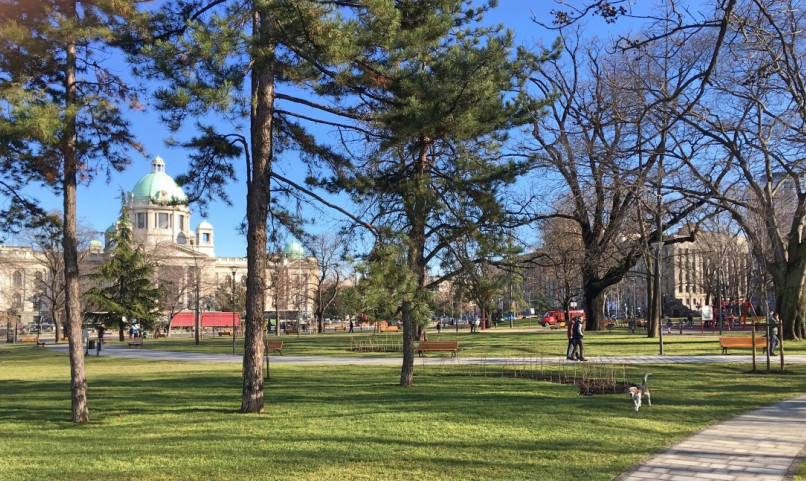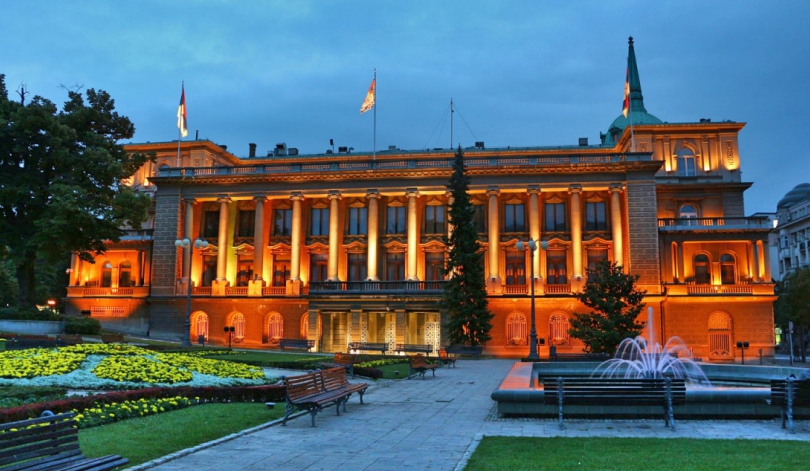Pioneers park, located in the very heart of the city, bounded by the Old Palace (now City Hall) and the New Palace (now Presidential Palace), and overlooking the National Assembly, is a truly unique place.
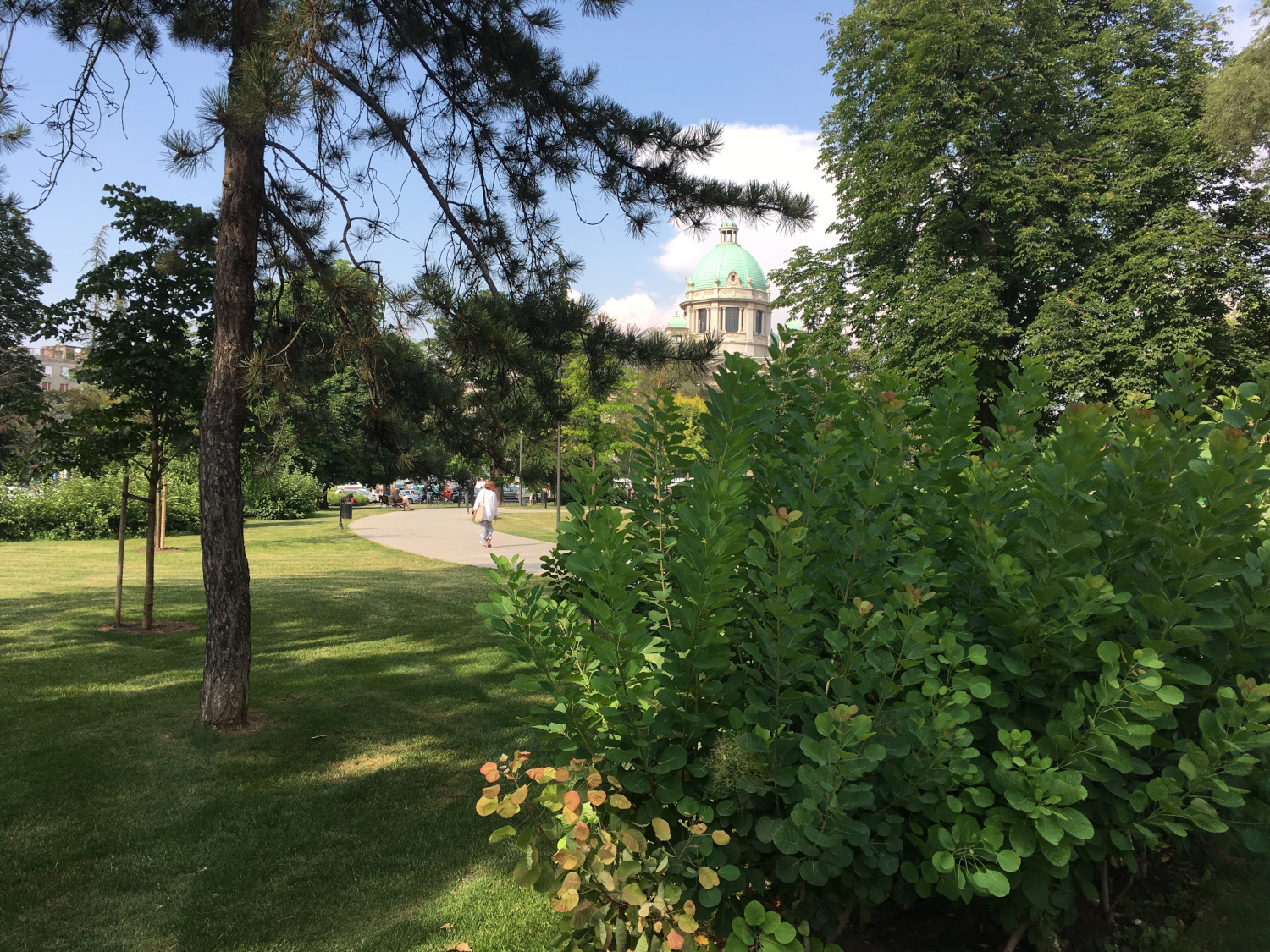
Between two world wars, it formed part of the royal complex, together with the royal garden. Back then, the two palaces were connected, not physically but urbanistically, by an arched shaped building, which made the whole complex looking like a real royal court with two large wings. But after the WWII and Tito's communists came to power, it changed it looks and it was named "Pioneers" after "Tito's Pioneers", organization of youngsters soon to become members of the communist party.
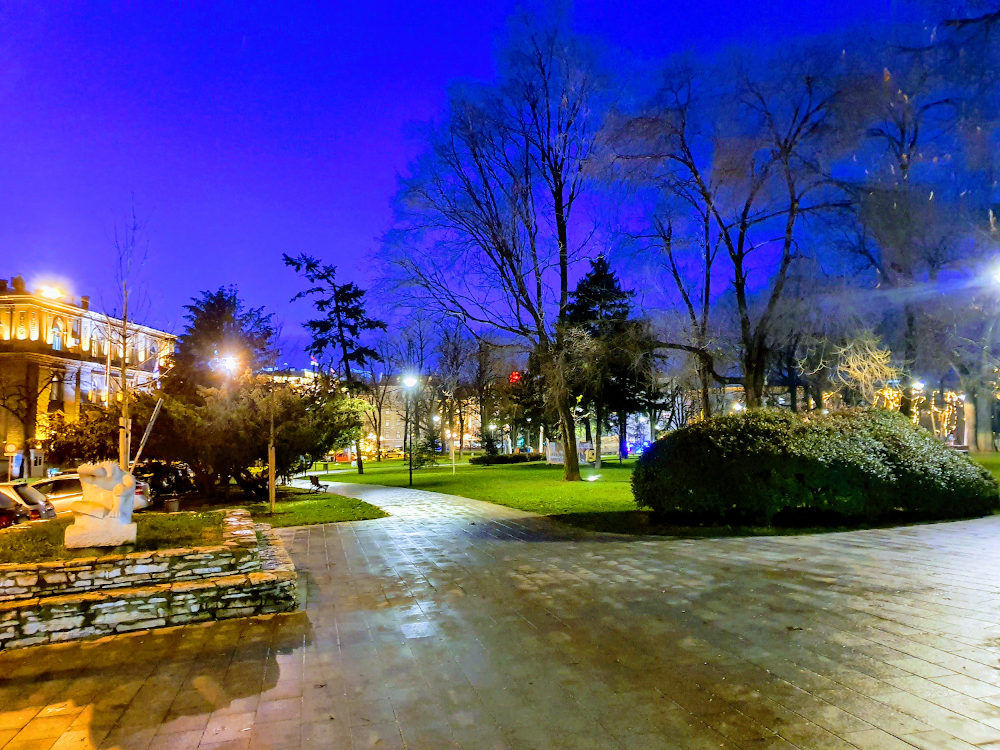
Pioneers' Park by night
The central building was removed in 1957, because, the word is, some high party official demanded so, as it stood in the way and prevented him from seeing the building of the National Assembly from his office in the Old Palace.

Royal Garden
Monument to Ivo Andrić, Serbian Nobel prize winner, is located at the outskirts of the park, next to the Presidential Palace. There is also writer's appartment, converted into museum.

At the entrance to the park, opposite to the Presidential Palace, there is a monument to the WWI Battle of Kajmakčalan, which at first may seem to you as an ordinary pile of rubble. On the contrary, it is a place of great importance for the Serbian people and their history.
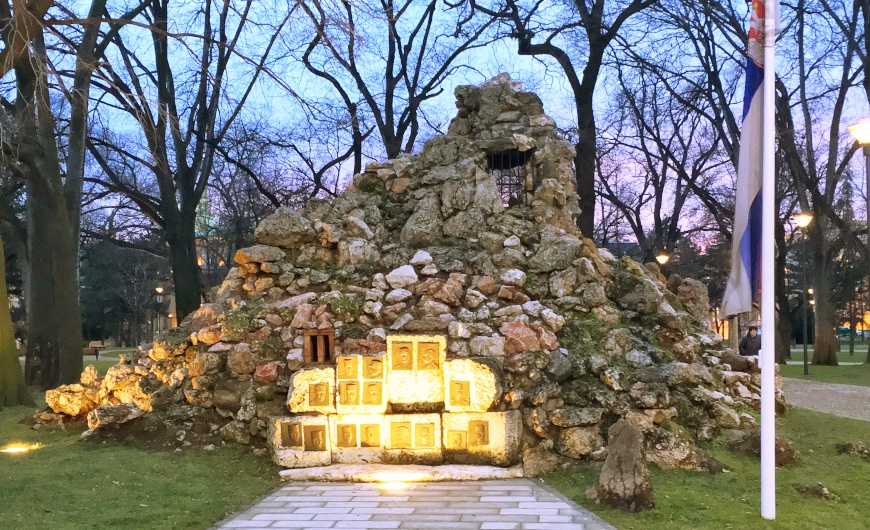
Monument to the Battle of Kajmakčalan
This pile of stones is actually a watchtower from the famous WWI battle at Kajmakčalan. The battle took place in 1916, at the mountain of Kajmakčalan (eng. Kaymakchalan), which is located at the present day border between Greece and the Former Yugoslav Republic of Macedonia. It was fought between Serb and Bulgarian forces, as a crucial push of the Serbian military through Salonica front towards regaining posseession over their homeland, at the time divided by Austria-Hungary and Bulgaria. Read more about this in Belgrade Tips article: Not an ordinary pile of rubble.
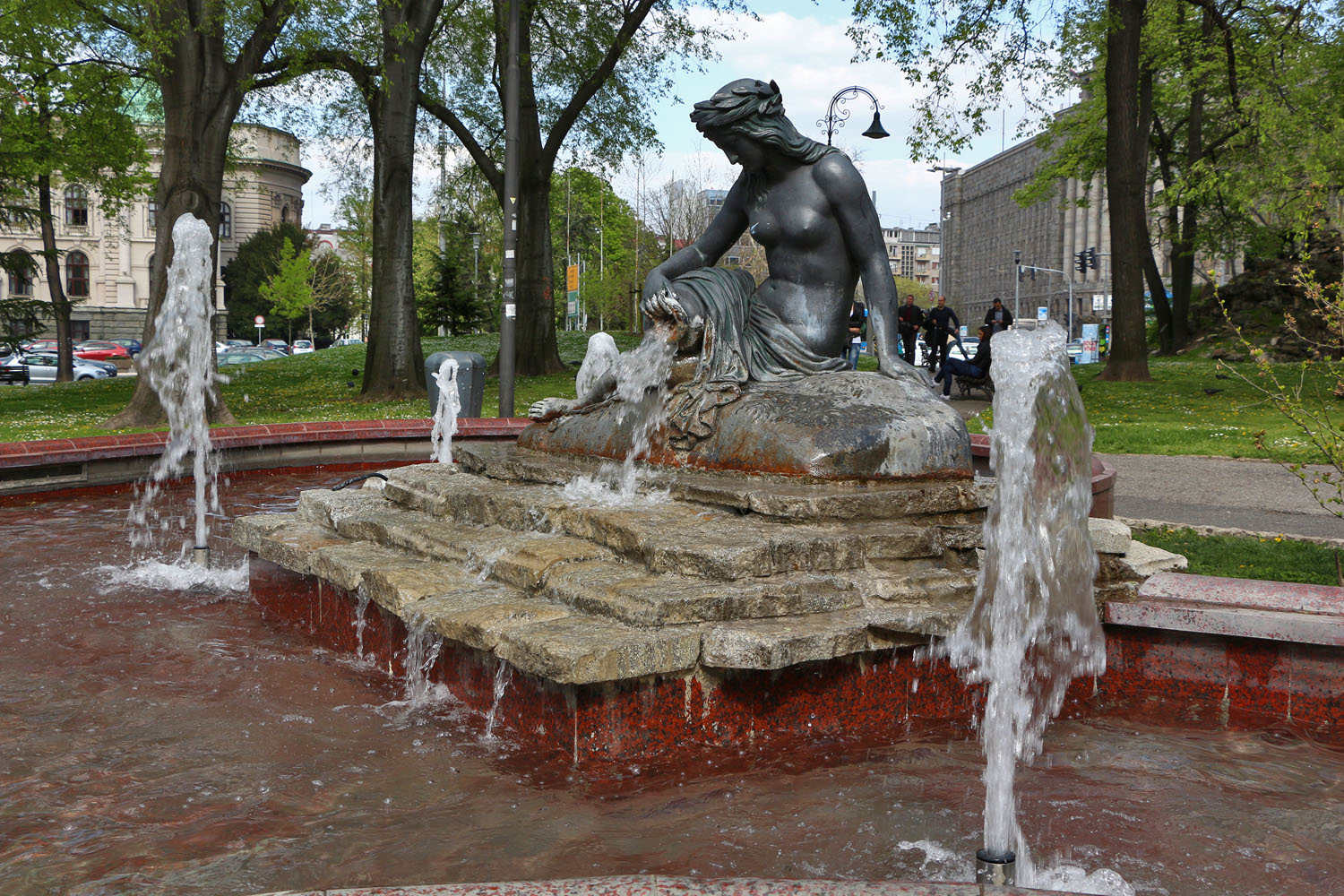
"Girl with a Jug" fountain
It is a peaceful and quiet spot in the middle of an urban jungle. Monument to the most famous Serbian female painter Nadežda Petrović is located there, as well as the fountain called "Girld with a jug".
New Palace (now Presidential Palace)
The New Palace was built as an additional wing to the Old Palace, immediately after World War I (1922). It was designed in the spirit of Academism with Renaissance and Baroque elements on the facade, to be the royal residence of Karadjordjević dynasty. The two palaces were conected with a beautiful concrete fence which was removed after World War II, and the royal gardens were converted into a park.
After the assasination of King Alexander of Yugoslavia in 1934, the palace was converted into a museum of Prince Paul, with an impressive art collection that prince passionately gathered over the years. After WWII, it served for various governmental purpeses. Now, it is the headquarters of the Serbian president, thus the new name - Presidential Palace.
Between two world wars, it formed part of the royal complex, together with the royal garden. Back then, the two palaces (the Old Palace and the New Palace) were connected, not physically but urbanistically, by an arched shaped building, which made the whole complex looking like a real royal court with two large wings. But after the WWII and Tito's communists came to power, it changed its l. The central building was removed in 1957, because, the word is, some high party official demanded so, as it stood in the way and prevented him from seeing the building of the National Assembly from his office in the Old Palace.
Watch our featured video on YouTube and subscribe to our channel!
 English (United Kingdom)
English (United Kingdom)  Srpski latinica (Srbija)
Srpski latinica (Srbija) 

